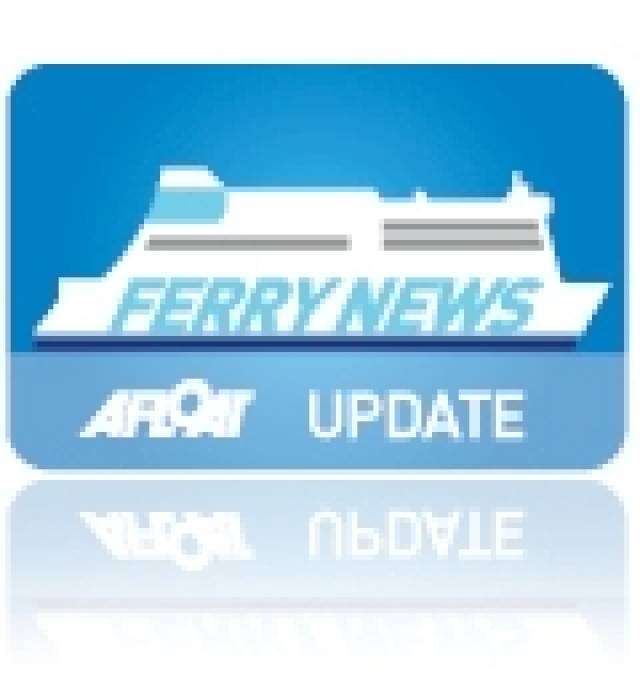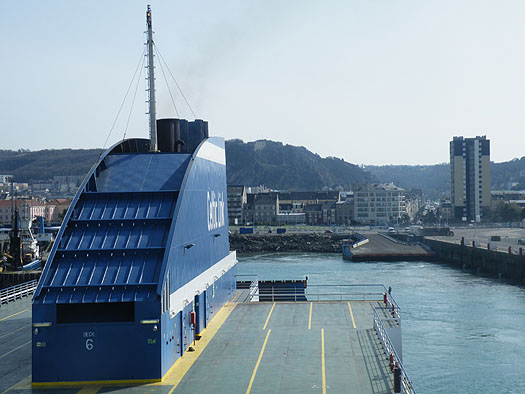#FarewellCelticLink - Celtic Link Ferries final farewell sailing arrived into Rosslare this morning from Cherbourg, marking an end of the era as the Wexford based company are been acquired by Stena Line with effect today, writes Jehan Ashmore, who travelled on board the ro-pax Celtic Horizon.
The last crossing was in command of Captain Richard Collins and his crew of 50 that operate services on board the 27,522 tonnes Visentini shipyard-built ro-pax. The 17-hour continental route will continue to maintain a sailing schedule of three return-crossings weekly when Stena Line rename the vessel for their first sailing tomorrow.
As Celtic Horizon bade farewell to Cherbourg yesterday afternoon, she cast her moorings alongside the former trans-Atlantic liner terminal, now the maritime and undersea exploration visitor attraction 'La Cité de la Mer'.
On board Celtic Horizon where excited French teenage students that occupied the uppermost deck drenched in 18-degrees sunlight and to the sound of the ship's horn marking her final departure.
Asides the countless coach based students that have travelled since Celtic Link began reinstating the service in 2005, after P&O Ferries abandoned the route the previous year, the company has catered for a diverse market that includes passengers on foot and in cars, camper-vans and motorcyclists.
In respect to freight, this involved un-accompanied freight-units and trucks notably carrying livestock trade, in which 18 such large trucks were conveyed on yesterday's sailing to Cherbourg during the busy calve season. Over the years there have been contracts to import French manufactured trade vehicles.
Of primary importance is fish exports to French, Spain, Italy and beyond, this was one of the major reasons why the owners of Celtic Link, the O'Flaherty brothers (and local investors) who operate a fish processing plant in Kilmore Quay and fleet of more a dozen trawlers purchased P&O's service.
Celtic Ferries departs Cherbourg Photo Jehan Ashmore
The deal had involved the route's existing freight-vessel European Diplomat, which incidentally formed part of the Falklands Task Force in 1982, however as Celtic Link's 'Diplomat' she served a limited passenger service for Celtic Link. She was displaced by ro-pax Norman Voyager which last week started new Brittany Ferries Économie services.
In 2011 Celtic Horizon which is the same ro-pax design of Norman Voyager, entered service on a five-year charter from the Italian shipyard owners to Celtic Link.
Celtic Horizon became the first and only vessel during the last nine years of the ferry company to be given a name reflecting her trading route and her owner's brand name displayed on her funnel.
Watch this space... with further reports from Afloat.ie's dedicated Ferry News section.

































































